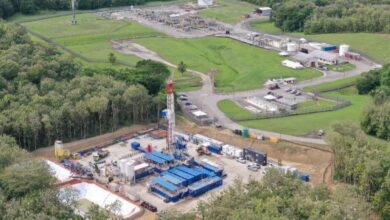Wirelines

API publishes 2nd edition of Specification 16C
The second edition of API Specification 16C, Choke and Kill Equipment, was recently published. The publication establishes the minimum requirements for the design and manufacture of several types of new equipment. These include:
• Articulated choke and kill lines;
• Choke and kill manifold buffer chamber;
• Choke and kill manifold assembly;
• Drilling choke actuators;
• Drilling choke controls;
• Drilling chokes;
• Flexible choke and kill lines;
• Union connections used in choke and kill assemblies;
• Rigid choke and kill lines; and
• Swivel unions used in choke and kill equipment.
IADC calls new BLM final rule on hydraulic fracturing burdensome, unnecessary
The US Bureau of Land Management (BLM) issued a final rule on 26 March regulating hydraulic fracturing on federal and Indian lands. The rule includes requirements that replicate controls already in place, IADC stated in a press release issued on 26 March. These existing requirements themselves enshrine the good oilfield standards that the industry has routinely practiced for many years and continuously improves, the association said. BLM estimates that the rule will impose an additional cost of $32 million per year. However, other estimates place these expenses much higher.
In the press release, IADC President and CEO Stephen Colville called the rule burdensome and unnecessary.
“IADC strongly disagrees with the necessity of the BLM rule, which creates more bureaucracy at the cost of positive economic impact for states with hydraulic fracturing operations,” Mr Colville said. “While we are focused on continuous improvement in all facets of drilling and production operations, we believe that the implementation of duplicative rules with regard to hydraulic fracturing are burdensome and pointless and, therefore, without merit.”
Numerous respected scientific studies have confirmed there is no harmful environmental impact from today’s hydraulic fracturing operations, IADC stated.
“It is noteworthy that hydraulic fracturing has been conducted safely and responsibly in the US for more than 60 years, and states have successfully regulated these activities for decades. It appears that BLM has published the final rule without definitive consultation with the states affected by it and without properly weighing the economic impact against the benefits expected,” Mr Colville continued. “IADC will never object to regulation that is necessary and beneficial. However, this new rule adds an unnecessary and duplicative layer of regulations. As an added layer of compliance, the rule creates unnecessary costs to an industry that plays a major part in this country’s economy in terms of low energy costs and high employment. It is disheartening that this rule will impact future industry growth.”




